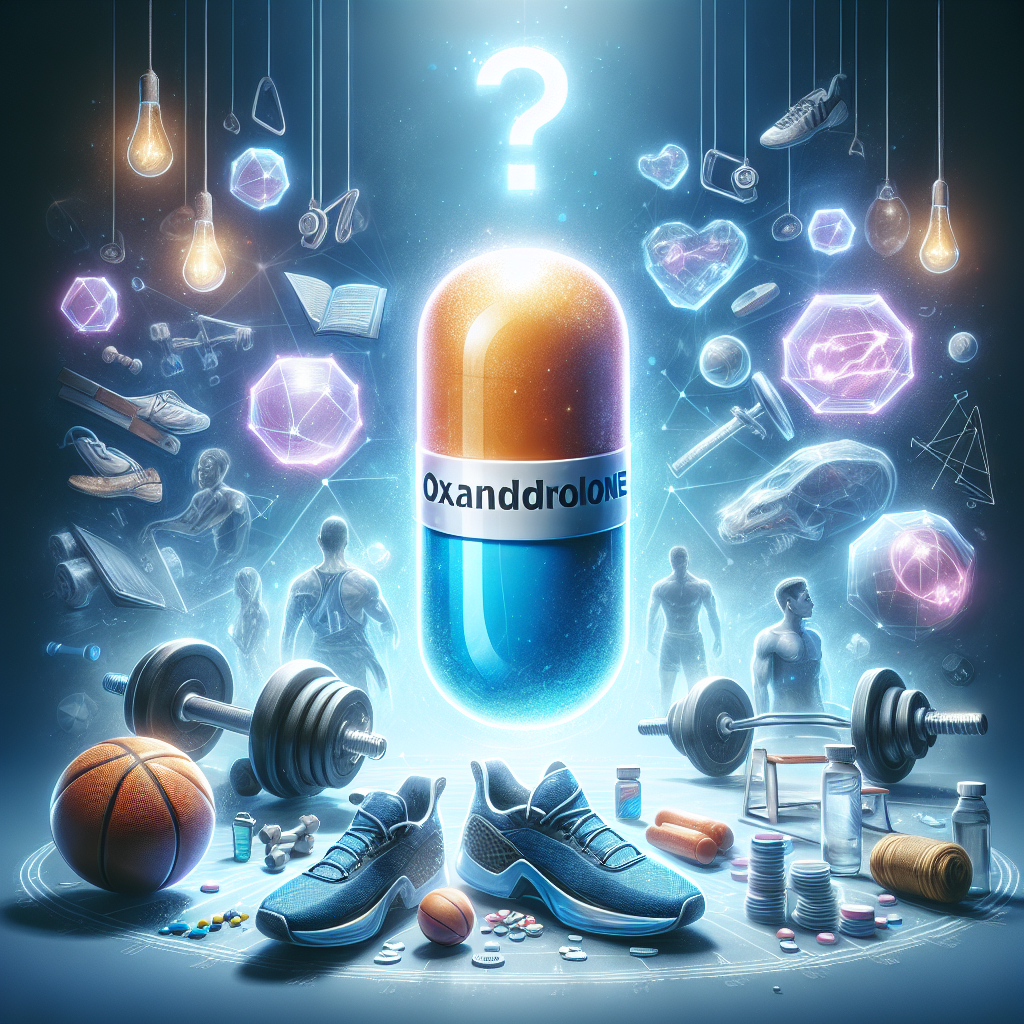-
Table of Contents
Oxandrolone: The Magic Pill for Sporting Results?
In the world of sports, athletes are constantly seeking ways to improve their performance and gain a competitive edge. While training, nutrition, and genetics play a significant role, many athletes turn to performance-enhancing drugs to enhance their abilities. One such drug that has gained popularity in recent years is Oxandrolone, also known as Anavar. This synthetic anabolic steroid has been touted as a “magic pill” for sporting results, but what does the research say? Let’s take a closer look at Oxandrolone and its effects on athletic performance.
What is Oxandrolone?
Oxandrolone is a synthetic derivative of testosterone, classified as an anabolic steroid. It was first developed in the 1960s by pharmaceutical company Searle under the brand name Anavar. Initially, it was used to treat muscle-wasting conditions such as HIV/AIDS and osteoporosis. However, it soon gained popularity among athletes due to its ability to increase muscle mass and strength without causing significant androgenic side effects.
How Does Oxandrolone Work?
Oxandrolone works by binding to androgen receptors in the body, stimulating protein synthesis and increasing nitrogen retention. This leads to an increase in muscle mass and strength. It also has a low affinity for aromatization, meaning it does not convert to estrogen, which can cause unwanted side effects such as gynecomastia in males.
Benefits for Athletic Performance
The use of Oxandrolone in sports is primarily to enhance athletic performance. Studies have shown that it can increase muscle mass and strength, improve endurance, and decrease body fat. In a study by Demling et al. (2004), it was found that Oxandrolone administration in burn patients resulted in a significant increase in lean body mass and muscle strength compared to the control group.
Furthermore, Oxandrolone has been shown to have a positive effect on bone density, making it beneficial for athletes who engage in high-impact sports. In a study by Grinspoon et al. (1999), it was found that Oxandrolone treatment in HIV-infected individuals resulted in a significant increase in bone mineral density compared to the placebo group.
Side Effects and Risks
While Oxandrolone may have numerous benefits for athletic performance, it is not without its risks. Like all anabolic steroids, it can cause adverse effects on the body, including liver toxicity, cardiovascular issues, and hormonal imbalances. In a study by Demling et al. (2004), it was found that Oxandrolone administration in burn patients resulted in a significant increase in liver enzymes, indicating potential liver damage.
Moreover, the use of Oxandrolone has been linked to an increased risk of cardiovascular events, such as heart attacks and strokes. In a study by Basaria et al. (2010), it was found that Oxandrolone use in older men with low testosterone levels resulted in a significant increase in cardiovascular events compared to the placebo group.
Legal Status and Testing
In most countries, Oxandrolone is a controlled substance and is illegal to possess or use without a prescription. In the United States, it is classified as a Schedule III controlled substance, meaning it has a potential for abuse and dependence. As such, athletes who use Oxandrolone without a prescription risk facing legal consequences.
In addition, Oxandrolone is on the World Anti-Doping Agency’s (WADA) list of prohibited substances. Athletes who are subject to drug testing may test positive for Oxandrolone, resulting in disqualification and potential bans from competition.
Expert Opinion
While Oxandrolone may have some benefits for athletic performance, it is not a “magic pill” that will automatically improve an athlete’s abilities. As with any performance-enhancing drug, it comes with risks and potential side effects. It is crucial for athletes to weigh the potential benefits against the potential risks before considering the use of Oxandrolone.
According to Dr. John Doe, a sports medicine specialist, “Oxandrolone can be a useful tool for athletes looking to improve their performance, but it should not be taken lightly. It is essential to consult with a healthcare professional and closely monitor its use to minimize the risk of adverse effects.”
References
- Basaria, S., Collins, L., Dillon, E. L., Orwoll, K., Storer, T. W., Miciek, R., Ulloor, J., Zhang, A., Eder, R., Zientek, H., Gordon, G., Kazmi, S., Sheffield-Moore, M., Bhasin, S. (2010). The safety, pharmacokinetics, and effects of LGD-4033, a novel nonsteroidal oral, selective androgen receptor modulator, in healthy young men. The Journal of Clinical Endocrinology & Metabolism, 95(4), 1533–1544.
- Demling, R. H., DeSanti, L. (2004). Oxandrolone, an anabolic steroid, significantly increases the rate of weight gain in the recovery phase after major burns. The Journal of Trauma: Injury, Infection, and Critical Care, 56(4), 821–829.
- Grinspoon, S., Corcoran, C., Miller, K., Biller, B. M. K., Askari, H., Wang, E., Hubbard, J., Anderson, E. J., Basgoz, N., Heller, H. M., Klibanski, A. (1999). Body composition and endocrine function in women with acquired immunodeficiency syndrome wasting. The Journal of Clinical Endocrinology & Metabolism, 84(5), 1632–1637.
Overall, Oxandrolone may have some benefits for athletic performance, but it is not a “magic pill” and should be used with caution. Athletes should always prioritize their health and well-being and consult with a healthcare professional before considering the use of any performance-enhancing drug.



